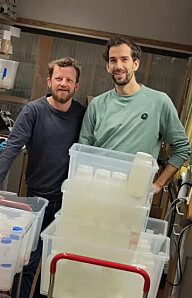
Food allergy may arise through our skin
People with dry and fragile skin often suffer from food allergies, new study suggests.
Studies have shown that some people may get milk allergy from airborne milk proteins that penetrate through their skin. The same may also apply to those who are allergic to eggs, wheat or fish.
In any case, people deficient in filaggrin – a protein that affects the skin’s permeability – are more likely than others to report food allergies.
So concludes an international study with 3,471 participants, headed by Allan Linneberg, MD, associate professor and the head of research at the Research Centre for Prevention and Health (RCPH) at Glostrup University Hospital, Denmark.
”We know that filaggrin affects how permeable a person’s skin is to external factors at the molecular level,” he says.
Our theory is that people with this skin barrier defect are at an increased risk of getting food allergies because microscopic amounts of e.g. wheat flour can penetrate through the skin.
“Our theory is that people with this skin barrier defect are at an increased risk of getting food allergies because microscopic amounts of e.g. wheat flour can penetrate through the skin.”
Filaggrin deficiency has previously been linked with asthma, eczema and allergies in a comprehensive Danish study from 2010.
Allergies and eczema – a common cause?
Filaggrin deficiency is caused by a genetic mutation that is present in 8-10 percent of the population.
These people’s skin does not retain water well, which leads to dryness and problems with eczema. When the skin lacks this protein, its ability to shield against external dirt and substances is reduced.
Scientists have known for some time that food allergies are more common in people with atopic dermatitis.
”We have also identified a common genetic predisposition to atopic dermatitis and food allergies, which we will continue to examine,” says Linneberg, adding that there is still some uncertainty regarding the explanation for this correlation.
He believes it is possible that the timing and the amount – for instance when cow’s milk is introduced for the first time – may affect the risk of developing allergies.
“If the body’s first introduction to a certain protein comes in large amounts through eating it, the immune system might not find it appropriate to start fighting it. Conversely, however, the immune system might respond if the protein is introduced in a small amount through the skin.”
This does not mean that parents should worry about baking with their kids, but further studies may help determine the ideal time and method for introducing certain foods to infants. But according to Linneberg, there is still a long way to go before we have any concrete recommendations.
He and his colleagues are currently studying whether filaggrin deficiency can be linked to peanut allergies.
Upcoming animal studies will also be taking a closer look at the link between the gene mutation and food allergies.
-------------------------
Read the Danish version of this article at videnskab.dk





